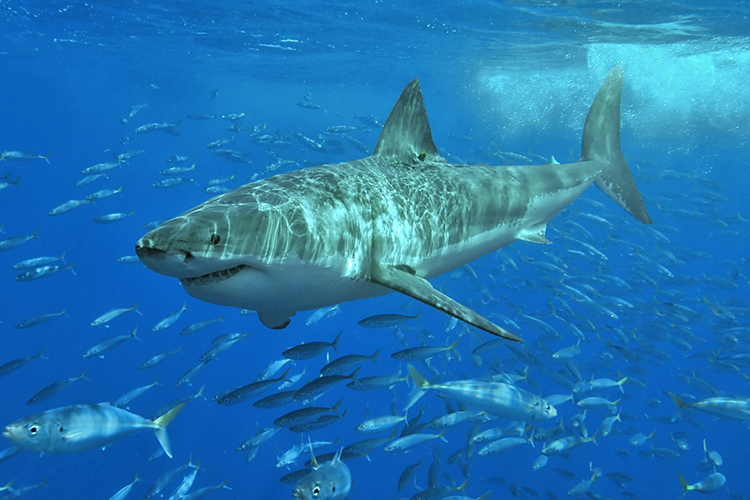Cuttlefish ink has potential as natural repellent to keep sharks away from beaches
13 February 2025

The effectiveness of cuttlefish ink as a natural shark deterrent suggests its potential as a tool for conservation and marine management Credit: Diego Delso, CC BY-SA 4.0
The ink of the cuttlefish could transform how sharks are deterred from hunting near swimmers, according to new research.
Superior hearing, acute vision, and an extraordinary sense of smell make sharks among the oceans’ top predators.
However, (opens in a new window)a new study from University College Dublin suggests that their heightened sensitivity to odours could also serve as their Achilles’ heel, offering a new way to protect beach-goers and reduce shark-human conflicts.
Documenting how cuttlefish ink functions as a “chemical repellent” against the olfactory receptors of sharks, PhD researcher Colleen Lawless, from the UCD School of Biology and Environmental Science, found its major component melanin could potentially overwhelm a shark’s sense of smell, causing it to avoid areas where the ink has been dispersed.
“Understanding how prey species like cuttlefish have evolved to exploit specific vulnerabilities in predators like sharks enriches not only our understanding of marine ecosystems but provides inspiration for conservation tools rooted in natural processes,” said Colleen.
This discovery could inspire the design of environmentally friendly, non-invasive shark-repellent systems, offering an alternative to invasive methods like gill nets and drumlines, which often harm harmless sharks, rays, turtles, dolphins, and even whales.
Modelling the three-dimensional structures of shark olfactory receptors by using genetic data from several shark species including the Great White Shark, Colleen and her colleagues (opens in a new window)Dr Graham Hughes and (opens in a new window)Dr John Finarelli discovered melanin possesses a molecular structure that lets it latch onto the smell receptors of these ocean predators, disrupting their sensory perception.

The Great White Shark is now considered vulnerable worldwide, and critically endangered in Europe and the Mediterranean Credit: Terry Goss, CC BY-SA 3.0
And because sharks generally share the same core set of smell receptors despite differences in lifestyle and habitat, the binding effect likely extends to all shark species, making it likely effective across most shark species.
The effectiveness of cuttlefish ink as a natural deterrent suggests its potential innovative application in areas such as conservation, marine management, and human-shark coexistence.
Current non-lethal methods for keeping sharks away from beaches include gill nets and drumlines which are invasive, catching large sharks but also trapping harmless sharks, rays, turtles, dolphins and even whales.
“By leveraging what we’ve discovered, it may be possible to deploy safe and targeted repellents near beaches, aquaculture sites, or fishing zones to minimize encounters between sharks and humans,” said Colleen.
“These findings could also support the management of shark movements in sensitive areas. For example, synthetic analogues of cuttlefish ink compounds could be used to keep sharks away from hazardous regions, such as polluted waters or areas with heavy fishing activity, thereby improving their survival as a lot of shark species are classified as endangered.”
By: David Kearns, Digital Journalist / Media Officer, UCD University Relations
To contact the UCD News & Content Team, email: newsdesk@ucd.ie






